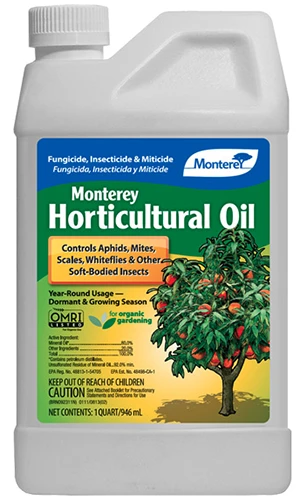Growing fruit trees isn’t always easy. The pests, the late freezes, and the skill necessary to prune them right can feel a bit overwhelming.
It’s especially frustrating when someone gives you vague advice like “prune regularly” or “spray in the spring for pests.”
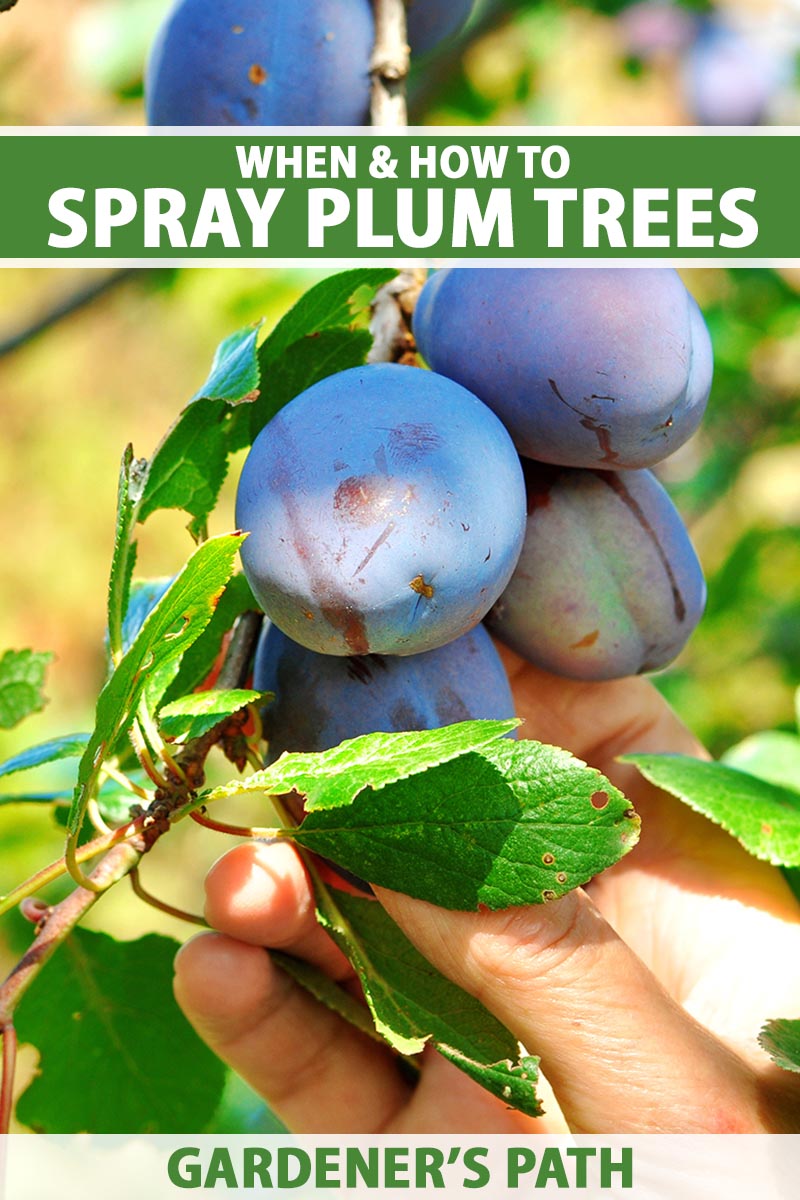
We link to vendors to help you find relevant products. If you buy from one of our links, we may earn a commission.
Spraying plum trees for pests requires precision, both to ensure that you take out the invaders that you’re gunning for, and so you don’t harm any wildlife that you didn’t intend to eradicate.
You can find more information on the basic ins and outs of growing your own plums in our article.
In this guide, we’ll explain how and when exactly to treat your plum trees for the best effect without unintended consequences.
We’ll break it down clearly so you won’t be left scratching your head wondering what you’re doing. Here’s what’s ahead:
Spraying Plums for Pests
Preventative Spraying vs. Treatment
To begin, there are two different types of spraying that you might need to do. The first is on a preventative schedule, and the second is in reaction to an infestation.
Preventative spraying is done on a set schedule regardless of whether there are pests around or not. Treatment is applied as needed when pests are present.

You can follow a preventative schedule for your plum trees if you’ve had pest problems in the past or if you want to try to avoid them altogether. Treatments are only applied when necessary.
Keep in mind that you should try to limit spraying insecticides to avoid unintended consequences like harming bees, fish, or other wildlife.
Work towards creating a balanced, healthy garden that fosters natural predators and pollinators, and you’ll usually experience fewer pests.
That said, sometimes the only way to keep your plum healthy is to spray away.
But unless you’ve had intense infestations in the previous year, stick to spraying only when you can positively identify pests rather than applying pesticides preventatively.
Late Winter
You might not have pest control on the brain when the weather is still cold and the garden is asleep. But that’s the best time to get ahead of pest problems.
Spraying with dormant oil in the late winter kills off a number of insects that overwinter in or near your trees. It’s one of the two most important times to treat your plums.
Dormant oils kill critters like aphids, scale, spider mites, and peach twig borers.
The downside to using dormant oils is that they can be toxic to fish if they get into waterways, and they can kill beneficial insects.
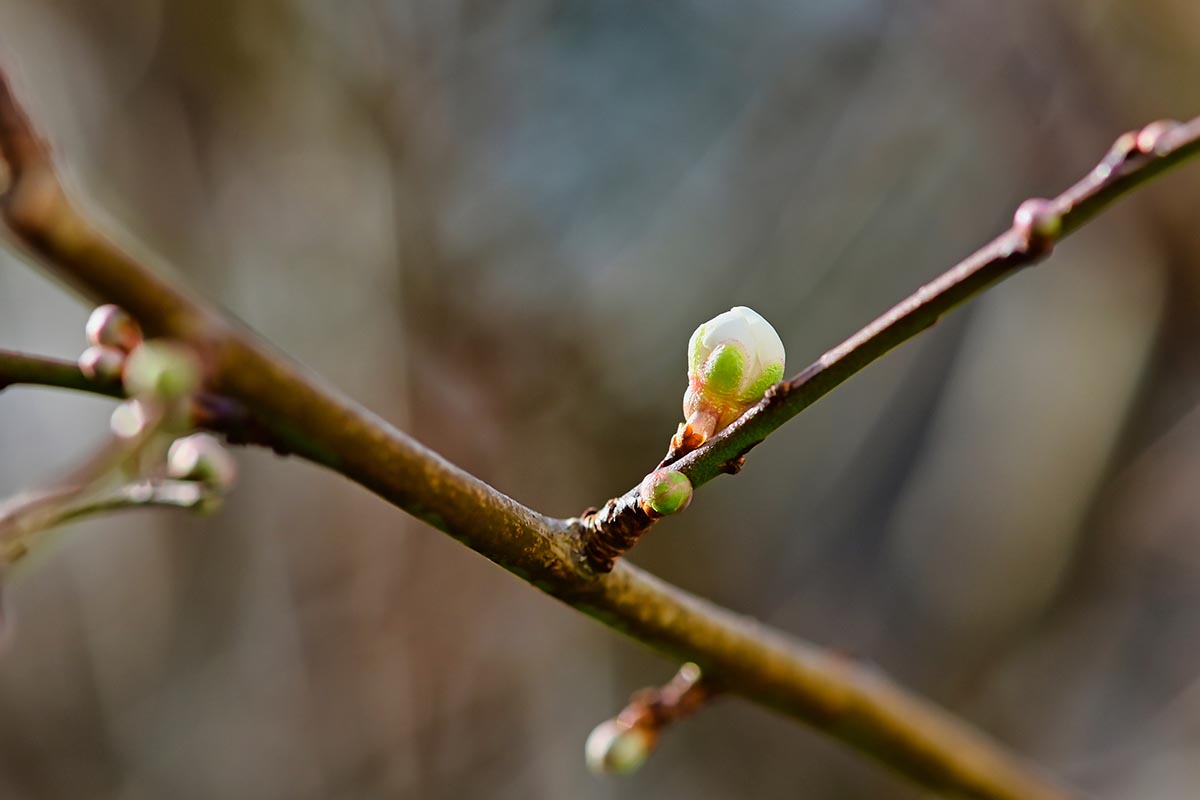
Spray dormant oil on your plum trees before the leaf buds begin to swell. If you see any green coloring on the bud, it’s too late to treat because the oil can kill emerging leaves and flowers.
The temperature should be between 45 and 55°F with no residual frost on the plum trees and no frost in the immediate forecast.
Spray in the morning so the oil can dry before the evening. Avoid spraying in the strong afternoon sunlight because the oil can cause burns.
Dormant oils only work if they come in direct contact with the pests you’re trying to kill.
The oil needs to coat the egg or insect in order to suffocate it. That means you must be thorough and saturate the tree.
This type of product is indiscriminate, killing anything that it coats, so its use should be reserved for times when you’ve dealt with a pest in the past year that you couldn’t get rid of, or if you know a pest is present.
Because you will need to cover an entire tree (or several of them), look for a product that comes in a concentrate that you can mix with water and apply with a hose sprayer.
Monterey Horticultural Oil, for instance, comes in pints, quarts, and gallons of concentrate. All three sizes are available at Arbico Organics.
Learn more about monitoring plants for pests in our guide to integrated pest management (IPM).
Spring
Along with winter spraying, early spring is one of the two most important times to spray for pests.
Right before the flower buds open and when they have a bit of color, it’s time to treat with insecticides to set your plum trees up for success throughout the growing season against the threat of aphids, scale, caterpillars, and peach twig borers.
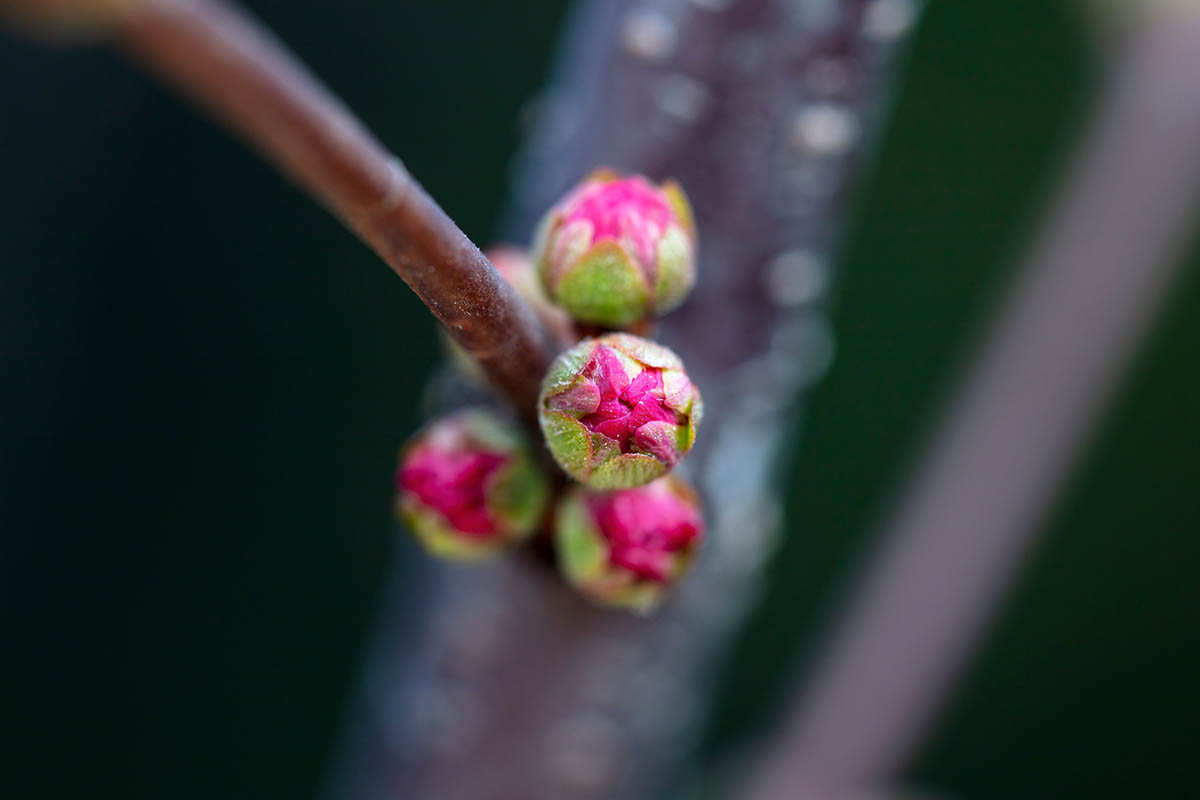
At this point, you want to spray with insecticidal soap, spinosad, or Bacillus thuringiensis kurstaki (Btk). Insecticidal soap works for treating aphids and scale, spinosad works for borers, and Btk is effective against caterpillars.
Don’t spray on a windy day or if there is a freeze predicted within the next few days. And never spray with any sort of insecticide once the flowers open.
Insecticides will kill off pollinators and lots of the good bugs that we want in our gardens. If we kill them off, we set up a vicious cycle of pest overgrowth and needing to spray to kill them, while also killing off the beneficial insects as well, and the cycle continues.
If you still see aphids, borers, or caterpillars after your pre-bloom treatment, or if leafrollers (Archips argyrospila) or spotted winged Drosophila (Drosophila suzukii) has started coming around, you can spray again with any of these products once all of the flower petals have fallen.
I deal with caterpillars on the regular, and Btk always saves my butt.
It’s a beneficial bacteria that won’t harm anything but insects in the Lepidoptera order, so while butterfly larvae might be at risk, it won’t harm other beneficial bugs.
Once again, look for concentrates since you’ll need to treat a large area. Bonide Thuricide is available at Arbico Organics in eight- and 16-ounce concentrates.
Summer and Fall
There is typically no need to spray your plum trees on a schedule in summer and fall.
At that point, most caterpillars and other larvae have moved on to their next phase in life, and control becomes less effective.
If you kept on top of your winter and spring schedule, aphids, mites, and scales should be under control at this time.
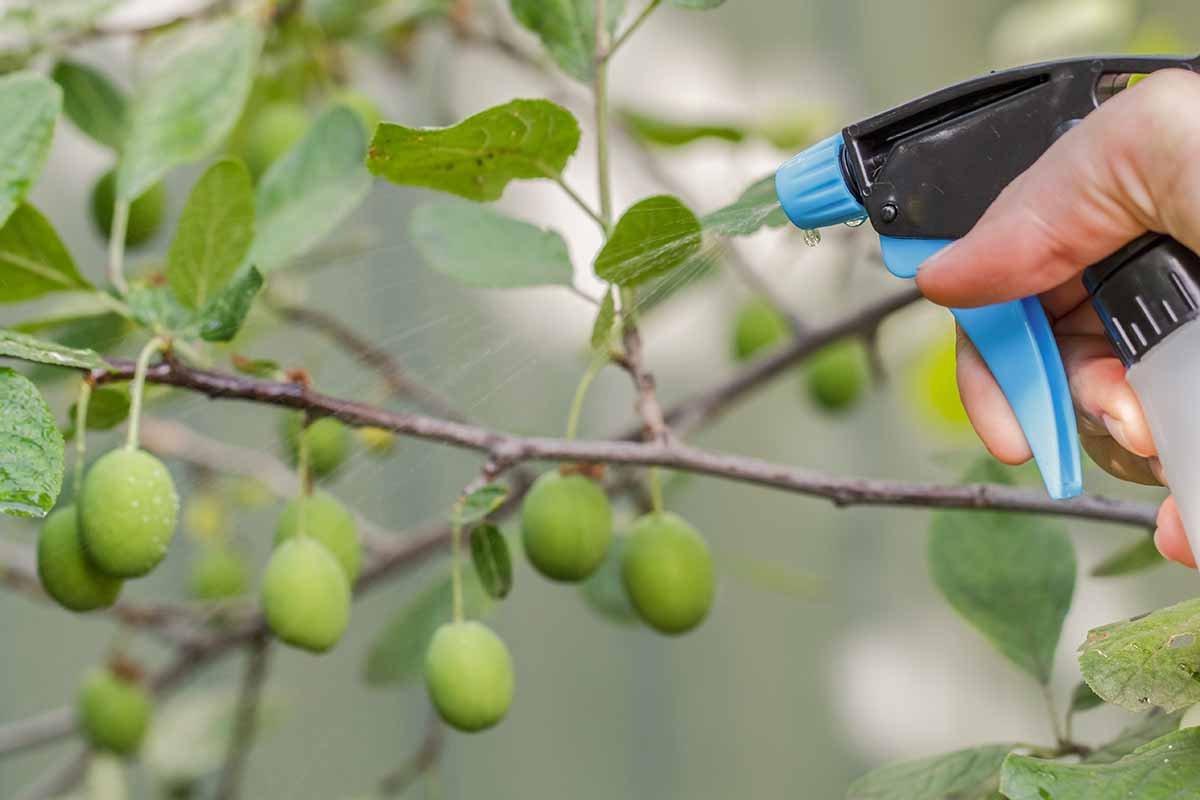
If you’re still struggling with any of these pests, however, you can spray every few weeks as needed. At this point, it’s usually aphids, mites, and borers that you need to look out for.
Just make sure you use a product that can be applied that frequently, and only use one that is approved for use on edible plants.
Be sure to read product labels and follow the instructions closely, and consult our guide to applying pesticides safely for additional tips.
Find the Right Balance
It can be a delicate balance finding the right timing, product, and amount of product you need to use to tackle pest problems in your plum trees.
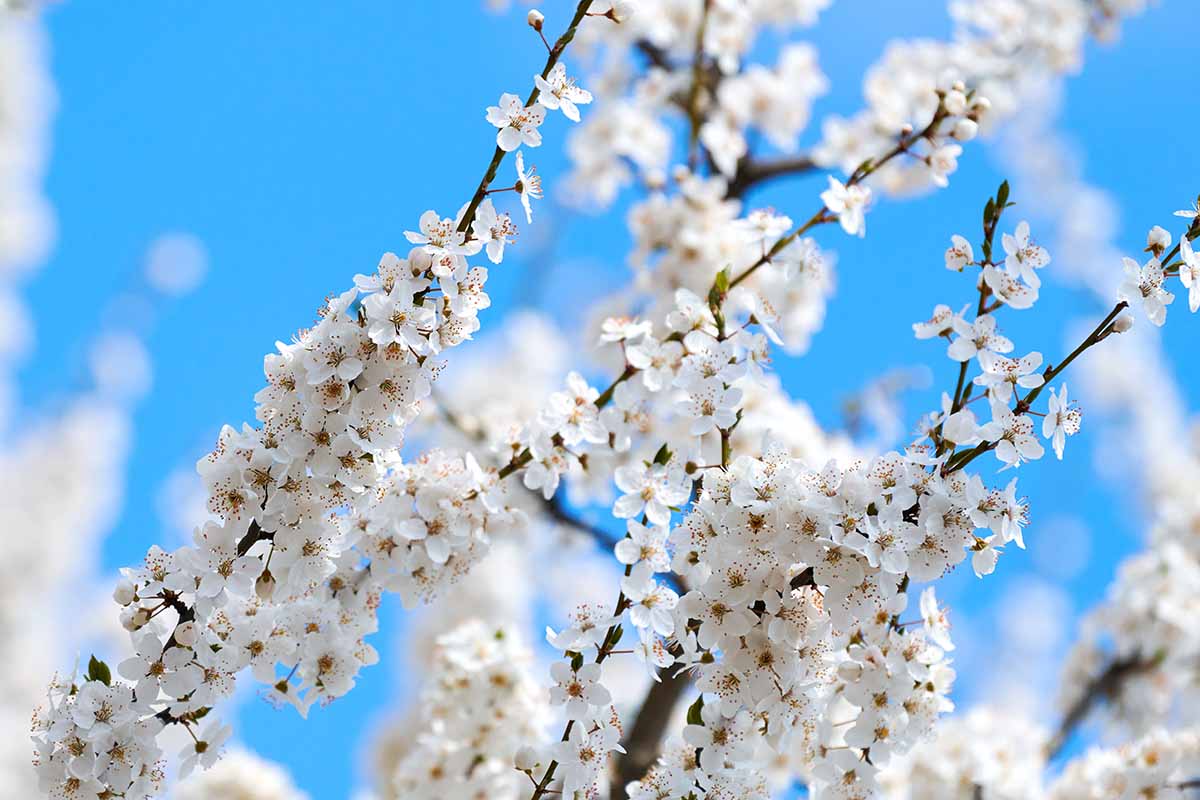
Hopefully, now you feel capable of doing all that. Wait until you see pests, or spray on a schedule if you’ve dealt with them in the previous growing season, and you should be enjoying those pest-free plums in no time.
What kind of plum are you growing? And what pests are you dealing with? Let us know in the comments.
Need a little more help growing plums? Check out these guides next:
